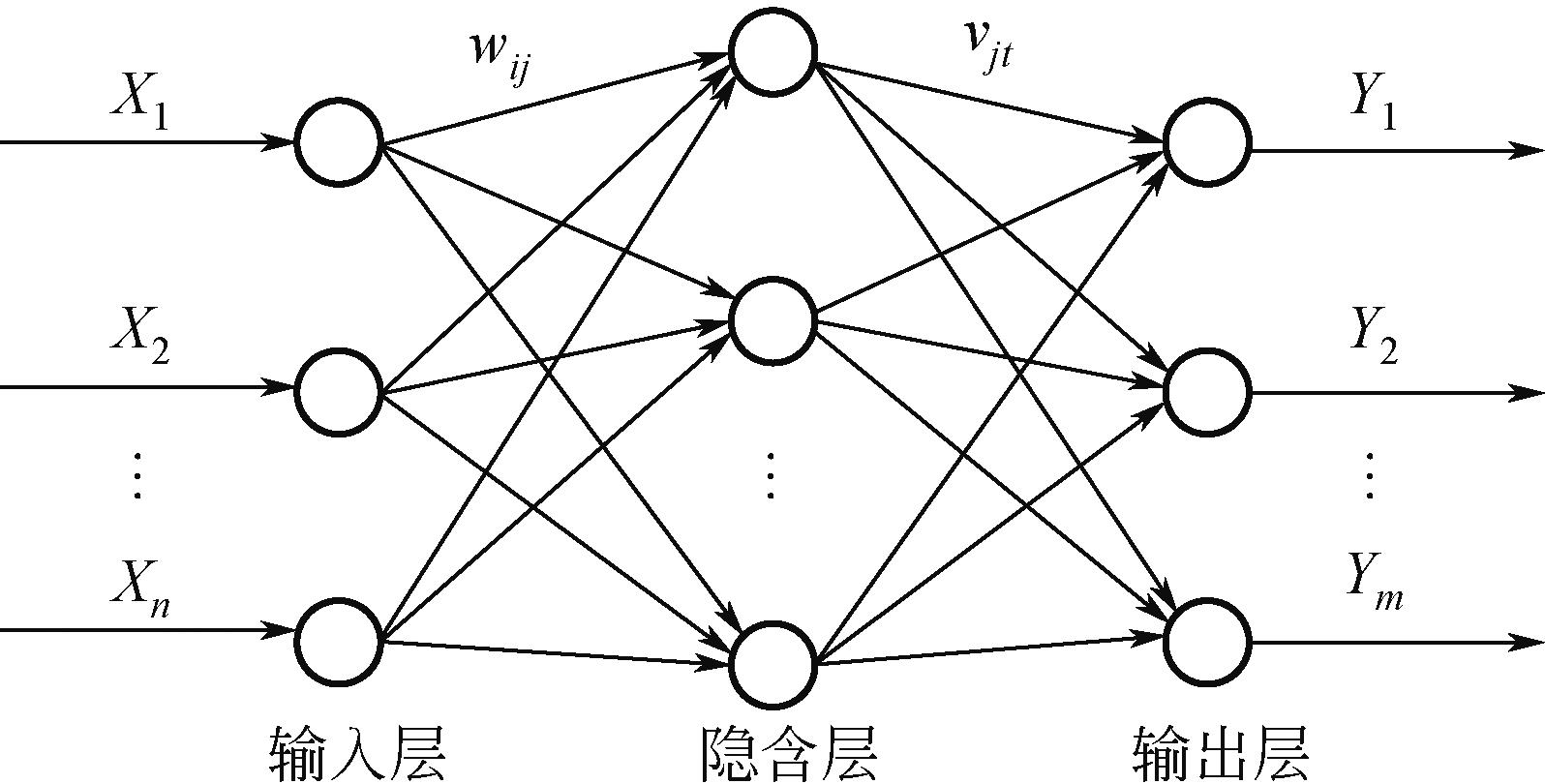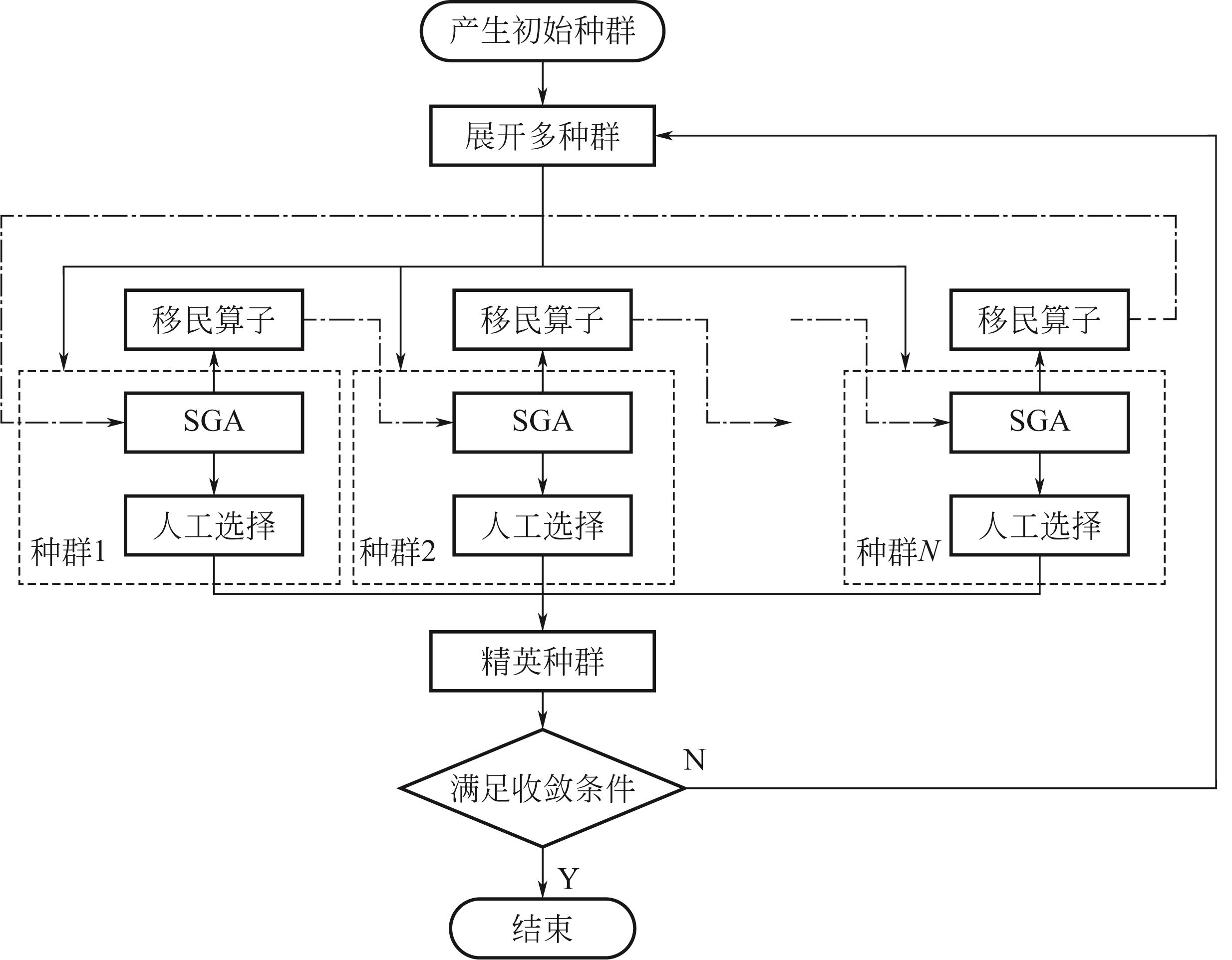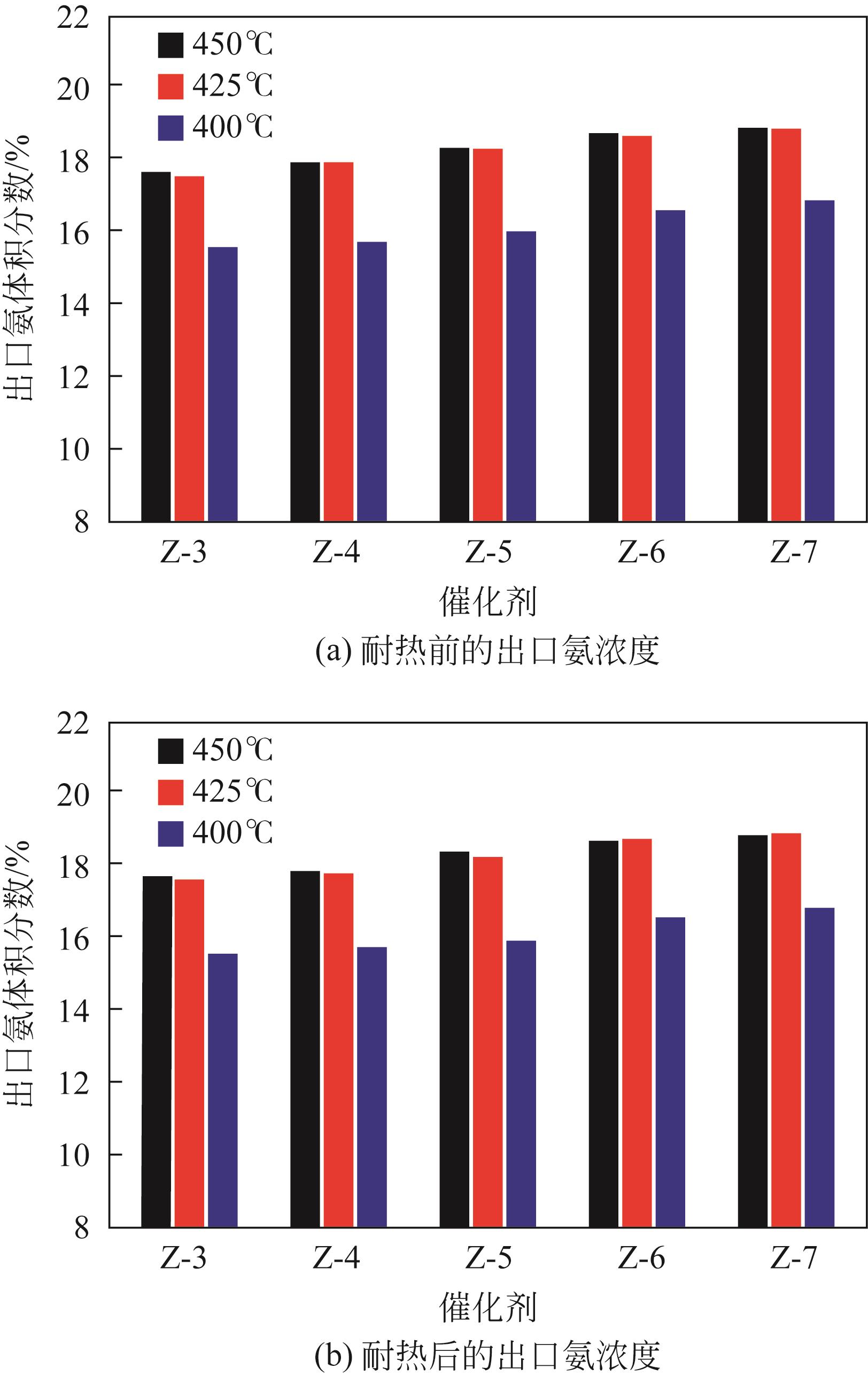Chemical Industry and Engineering Progress ›› 2024, Vol. 43 ›› Issue (3): 1302-1308.DOI: 10.16085/j.issn.1000-6613.2023-0433
• Industrial catalysis • Previous Articles
Optimization of Fe1-x O ammonia synthesis catalyst by BP neural network model
ZHANG Shuming( ), LIU Huazhang(
), LIU Huazhang( )
)
- Institute of Industrial Catalysis, Zhejiang University of Technology, Hangzhou 310014, Zhejiang, China
-
Received:2023-03-22Revised:2023-05-30Online:2024-04-11Published:2024-03-10 -
Contact:LIU Huazhang
基于BP神经网络模型优化Fe1-x O基氨合成催化剂
- 浙江工业大学工业催化研究所,浙江 杭州 310014
-
通讯作者:刘化章 -
作者简介:张书铭(1997—),男,硕士研究生,研究方向为合成氨。E-mail:zhang2087720269@163.com。
CLC Number:
Cite this article
ZHANG Shuming, LIU Huazhang. Optimization of Fe1-x O ammonia synthesis catalyst by BP neural network model[J]. Chemical Industry and Engineering Progress, 2024, 43(3): 1302-1308.
张书铭, 刘化章. 基于BP神经网络模型优化Fe1-x O基氨合成催化剂[J]. 化工进展, 2024, 43(3): 1302-1308.
share this article
Add to citation manager EndNote|Ris|BibTeX
URL: https://hgjz.cip.com.cn/EN/10.16085/j.issn.1000-6613.2023-0433
助催化剂 数目 | 助催化剂种类 | 样本数 | 出口氨浓度(活性)平均值/% |
|---|---|---|---|
| 3 | Al2O3、K2O、CaO | 10 | 15.74 |
| 4 | Al2O3、K2O、CaO、A | 11 | 16.09 |
| 5 | Al2O3、K2O、CaO、A、B | 14 | 16.14 |
| 6 | Al2O3、K2O、CaO、A、B、C | 30 | 17.40 |
| 7 | Al2O3、K2O、CaO、A、B、C、D | 30 | 17.52 |
助催化剂 数目 | 助催化剂种类 | 样本数 | 出口氨浓度(活性)平均值/% |
|---|---|---|---|
| 3 | Al2O3、K2O、CaO | 10 | 15.74 |
| 4 | Al2O3、K2O、CaO、A | 11 | 16.09 |
| 5 | Al2O3、K2O、CaO、A、B | 14 | 16.14 |
| 6 | Al2O3、K2O、CaO、A、B、C | 30 | 17.40 |
| 7 | Al2O3、K2O、CaO、A、B、C、D | 30 | 17.52 |
| 助催化剂数目 | 节点数 | ||
|---|---|---|---|
| 输入层 | 隐含层 | 输出层 | |
| 3 | 3 | 7 | 1 |
| 4 | 4 | 9 | 1 |
| 5 | 5 | 8 | 1 |
| 6 | 6 | 6 | 1 |
| 7 | 7 | 5 | 1 |
| 助催化剂数目 | 节点数 | ||
|---|---|---|---|
| 输入层 | 隐含层 | 输出层 | |
| 3 | 3 | 7 | 1 |
| 4 | 4 | 9 | 1 |
| 5 | 5 | 8 | 1 |
| 6 | 6 | 6 | 1 |
| 7 | 7 | 5 | 1 |
| 项目 | 助催化剂数目 | ||||
|---|---|---|---|---|---|
| 3 | 4 | 5 | 6 | 7 | |
| 总样本数 | 10 | 11 | 14 | 30 | 30 |
| 训练样本数 | 9 | 10 | 13 | 27 | 27 |
| 预测样本数 | 1 | 1 | 1 | 3 | 3 |
| 每个样本参与训练的次数 | 9 | 10 | 13 | 9 | 9 |
| 每个样本被预测的次数 | 1 | 1 | 1 | 1 | 1 |
| 项目 | 助催化剂数目 | ||||
|---|---|---|---|---|---|
| 3 | 4 | 5 | 6 | 7 | |
| 总样本数 | 10 | 11 | 14 | 30 | 30 |
| 训练样本数 | 9 | 10 | 13 | 27 | 27 |
| 预测样本数 | 1 | 1 | 1 | 3 | 3 |
| 每个样本参与训练的次数 | 9 | 10 | 13 | 9 | 9 |
| 每个样本被预测的次数 | 1 | 1 | 1 | 1 | 1 |
| 操作参数 | 助催化剂数目 | ||||
|---|---|---|---|---|---|
| 3 | 4 | 5 | 6 | 7 | |
| 种群数量G | 5 | 5 | 5 | 10 | 10 |
| 种群规模N | 20 | 20 | 30 | 40 | 40 |
| 交叉概率Pc | 0.6~0.9 | 0.6~0.9 | 0.6~0.9 | 0.6~0.9 | 0.6~0.9 |
| 变异概率Pm | 0.1~0.4 | 0.1~0.4 | 0.1~0.4 | 0.1~0.4 | 0.1~0.4 |
| 最大繁衍代数 | 100 | 100 | 100 | 100 | 100 |
| 操作参数 | 助催化剂数目 | ||||
|---|---|---|---|---|---|
| 3 | 4 | 5 | 6 | 7 | |
| 种群数量G | 5 | 5 | 5 | 10 | 10 |
| 种群规模N | 20 | 20 | 30 | 40 | 40 |
| 交叉概率Pc | 0.6~0.9 | 0.6~0.9 | 0.6~0.9 | 0.6~0.9 | 0.6~0.9 |
| 变异概率Pm | 0.1~0.4 | 0.1~0.4 | 0.1~0.4 | 0.1~0.4 | 0.1~0.4 |
| 最大繁衍代数 | 100 | 100 | 100 | 100 | 100 |
助催化剂 数目 | 体积分数/% | 425℃出口氨 体积分数/% | ||||||
|---|---|---|---|---|---|---|---|---|
| Al2O3 | K2O | CaO | A | B | C | D | ||
| 3 | 1.97 | 0.83 | 1.52 | 18.05 | ||||
| 4 | 1.69 | 0.42 | 1.64 | 0.57 | 17.93 | |||
| 5 | 1.32 | 0.85 | 1.78 | 0.38 | 0.59 | 18.69 | ||
| 6 | 1.64 | 0.94 | 2.03 | 0.78 | 1.48 | 0.74 | 18.88 | |
| 7 | 1.69 | 0.80 | 1.59 | 0.81 | 0.52 | 0.55 | 0.49 | 19.14 |
助催化剂 数目 | 体积分数/% | 425℃出口氨 体积分数/% | ||||||
|---|---|---|---|---|---|---|---|---|
| Al2O3 | K2O | CaO | A | B | C | D | ||
| 3 | 1.97 | 0.83 | 1.52 | 18.05 | ||||
| 4 | 1.69 | 0.42 | 1.64 | 0.57 | 17.93 | |||
| 5 | 1.32 | 0.85 | 1.78 | 0.38 | 0.59 | 18.69 | ||
| 6 | 1.64 | 0.94 | 2.03 | 0.78 | 1.48 | 0.74 | 18.88 | |
| 7 | 1.69 | 0.80 | 1.59 | 0.81 | 0.52 | 0.55 | 0.49 | 19.14 |
催化剂 样品 | 425℃活性(出口氨浓度/%) | ||||
|---|---|---|---|---|---|
样本 平均值 | 预测值 | 实验值 | 实验值-预测值 | 实验值-样本 平均值 | |
| Z-3 | 15.74 | 18.05 | 17.53 | -0.52 | 1.79 |
| Z-4 | 16.09 | 17.93 | 17.89 | -0.04 | 1.80 |
| Z-5 | 16.14 | 18.69 | 18.28 | -0.41 | 2.14 |
| Z-6 | 17.40 | 18.88 | 18.62 | -0.26 | 1.22 |
| Z-7 | 17.52 | 19.14 | 18.83 | -0.31 | 1.31 |
催化剂 样品 | 425℃活性(出口氨浓度/%) | ||||
|---|---|---|---|---|---|
样本 平均值 | 预测值 | 实验值 | 实验值-预测值 | 实验值-样本 平均值 | |
| Z-3 | 15.74 | 18.05 | 17.53 | -0.52 | 1.79 |
| Z-4 | 16.09 | 17.93 | 17.89 | -0.04 | 1.80 |
| Z-5 | 16.14 | 18.69 | 18.28 | -0.41 | 2.14 |
| Z-6 | 17.40 | 18.88 | 18.62 | -0.26 | 1.22 |
| Z-7 | 17.52 | 19.14 | 18.83 | -0.31 | 1.31 |
| 1 | LIU Huazhang, LI Xiaonian. The precursor phase composition of iron catalyst and discovery of FeO based catalyst for ammonia synthesis[J]. Science China-Chemistry, 1995, 38: 529-537. |
| 2 | LIU Huazhang. Ammonia synthesis catalyst 100 years: Practice, enlightenment and challenge[J]. Chinese Journal of Catalysis, 2014, 35(10): 1619-1640. |
| 3 | 刘化章, 李小年, 胡樟能, 等. Fe1- x O基氨合成催化剂的制备化学[J]. 高等学校化学学报, 2002, 23(1): 87-91. |
| LIU Huazhang, LI Xiaonian, HU Zhangneng, et al. Preparation chemistry of Fe1- x O based catalyst for ammonia synthesis[J]. Chemical Research in Chinese Universities, 2002, 23(1): 87-91. | |
| 4 | LIU Huazhang, LI Xiaonian. Study on the composition of parent phase of iron Catalyst and Discovery of FeO based ammonia synthesis catalyst[J]. Science in China, 1995, 25(1): 1-6. |
| 5 | 陈志军, 严海宇, 蓝国钧,等. 助催化剂对Fe1- x O基氨合成催化剂性能的影响[J]. 工业催化, 2013, 21(5): 41-45. |
| CHEN Zhijun, YAN Haiyu, LAN Guojun, et al. Influence of promoters on the performance of Fe1- x O based catalyst for ammonia synthesis[J]. Industrial Catalysis, 2013, 21(5): 41-45. | |
| 6 | 李小年, 刘化章, 陈诵英. 助催化剂对Fe1- x O基氨合成催化剂活性的影响[J]. 催化学报, 1998, 19(3): 201-205. |
| LI Xiaonian, LIU Huazhang, CHEN Songying. Studies on the effect of promoters on the activity of Fe1- x O based ammonia synthesis[J]. Chinese Journal of Catalysis, 1998, 19(3): 201-205. | |
| 7 | 陈志军. Fe1- x O基氨合成催化剂助催化剂的选择与优化[D]. 杭州: 浙江工业大学, 2013. |
| CHEN Zhijun. Exprolation and optimization of promoters of Fe1- x O based catalysts for ammonia synthesis[D]. Hangzhou: Zhejiang University of Technology, 2013. | |
| 8 | 李林辉, 刘化章, 韩文锋, 等. SrO助催化剂对Fe1- x O基熔铁氨合成催化剂性能的影响[J]. 化工进展, 2019, 38(3): 1371-1376. |
| LI Linhui, LIU Huazhang, HAN Wenfeng, et al. Effect of SrO promoter on the activity and thermal-stability of wüstite based catalyst for ammonia synthesis[J]. Chemical Industry and Engineering Progress, 2019, 38(3): 1371-1376. | |
| 9 | 孙珍珍, 刘化章, 叶攀, 等. Fe1- x O基氨合成催化剂助催化剂的优选[J]. 化工进展, 2022,41(4): 1886-1893. |
| SUN Zhenzhen, LIU Huazhang, YE Pan, et al. Optimization of promoters for Fe1- x O-based ammonia synthesis catalyst[J]. Chemical Industry and Engineering Progress, 2022,41(4): 1886-1893. | |
| 10 | HAN Wenfeng, HUANG Shiliang, CHENG Tianhong, et al. Promotion of Nb2O5 on the wüstite-based iron catalyst for ammonia synthesis[J]. Applied Surface Science, 2015, 353: 17-23. |
| 11 | LIU Huazhang, LI Xiaonian. Precursor of iron catalyst for ammonia synthesis: Fe3O4, Fe1- x O, Fe2O3 or their mixture?[J]. Studies in Surface Science and Catalysis, 2000, 130: 2207-2212. |
| 12 | 郑启富. 计算智能在氨合成催化剂设计与工艺优化中的应用[D]. 杭州: 浙江工业大学, 2012. |
| ZHENG Qifu. Application of computational intelligence in catalyst design and process optimization of ammonia synthesis[D]. Hangzhou: Zhejiang University of Technology, 2012. | |
| 13 | AGHAREZAEI P, SAHU T, SHOCK J, et al. Designing catalysts via evolutionary-based optimization techniques[J]. Computational Materials Science, 2023, 216: 111833. |
| 14 | 刘方, 徐龙, 马晓迅. BP神经网络的发展及其在化学化工中的应用[J]. 化工进展, 2019, 38(6): 2559-2573. |
| LIU Fang, XU Long, MA Xiaoxun. Development of BP neural network and its application in chemistry and chemical engineering[J]. Chemical Industry and Engineering Progress, 2019, 38(6): 2559-2573. | |
| 15 | GARONA H A, CAVALCANTI F M, DE ABREU T F, et al. Evaluation of Fischer-Tropsch synthesis to light olefins over Co- and Fe-based catalysts using artificial neural network[J]. Journal of Cleaner Production, 2021, 321: 129003. |
| 16 | 温正. 精通MATLAB智能算法[M]. 北京: 清华大学出版社, 2015. |
| WEN Zheng. Proficient in MATLAB intelligent algorithm[M]. Beijing: Tsinghua University Press, 2015. | |
| 17 | 雷英杰, 张善文. MATLAB遗传算法工具箱及应用[M]. 2版. 西安: 西安电子科技大学出版社, 2014. |
| LEI Yingjie, ZHANG Shanwen. MATLAB genetic algorithm toolbox and its application[M]. 2nd ed. Xi’an: Xidian University Press, 2014. | |
| 18 | 刘鹏程, 李新利. 基于多种群遗传算法的含分布式电源的配电网故障区段定位算法[J]. 电力系统保护与控制, 2016, 44(2): 36-41. |
| LIU Pengcheng, LI Xinli. Fault-section location of distribution network containing distributed generation based on the multiple-population genetic algorithm[J]. Power System Protection and Control, 2016, 44(2): 36-41. | |
| 19 | 石磊, 高卫红, 吕莉莉, 等. 基于BP人工神经网络和遗传算法的葛根总黄酮提取工艺优化研究[J]. 中国中医急症, 2018, 27(2): 198-201. |
| SHI Lei, GAO Weihong, Lili LYU, et al. Research on extraction process optimization for total flavones in radix puerariae based on back propagation artificial neural network and genetic algorithm[J]. Journal of Emergency in Traditional Chinese Medicine, 2018, 27(2): 198-201. | |
| 20 | MESBAH M, SOLTANALI S, BAHRANIFARD Z, et al. Production of thymol from alkylation of m-cresol with isopropanol over ZSM-5 catalysts: Artificial neural network (ANN) modelling[J]. Journal of the Indian Chemical Society, 2023, 100(2): 100882. |
| 21 | PAJAK M, BUCHANIEC S, KIMIJIMA S, et al. A multiobjective optimization of a catalyst distribution in a methane/steam reforming reactor using a genetic algorithm[J]. International Journal of Hydrogen Energy, 2021, 46(38): 20183-20197. |
| 22 | ZAFARI M, KUMAR D, UMER M, et al. Machine learning-based high throughput screening for nitrogen fixation on boron-doped single atom catalysts[J]. Journal of Materials Chemistry A, 2020, 8(10): 5209-5216. |
| 23 | CHANDANA K S, KARKA S, GUJRAL M K, et al. Machine learning aided catalyst activity modelling and design for direct conversion of CO2 to lower olefins[J]. Journal of Environmental Chemical Engineering, 2023, 11(2): 109555. |
| 24 | QIU Huixian, XIA Xuewen, LI Yuanxiang, et al. A dynamic multipopulation genetic algorithm for multiobjective workflow scheduling based on the longest common sequence[J]. Swarm and Evolutionary Computation, 2023, 78: 101291. |
| 25 | YE Jiahao, PENG Qingguo. Improved emissions conversion of diesel oxidation catalyst using multifactor impact analysis and neural network[J]. Energy, 2023, 271: 127048. |
| 26 | FAN Haonan, YANG Xiaodie, MA Jing, et al. Computer-assisted design of asymmetric PNP ligands for ethylene tri-/tetramerization: A combined DFT and artificial neural network approach[J]. Journal of Catalysis, 2023, 418: 121-129. |
| 27 | 刘科研, 盛万兴, 马晓晨, 等. 基于多种群遗传算法的分布式光伏接入配电网规划研究[J]. 太阳能学报, 2021, 42(6): 146-155. |
| LIU Keyan, SHENG Wanxing, MA Xiaochen, et al. Planning research of distributed photovoltaic source access distribution network based on multi-population genetic algorithm[J]. Acta Energiae Solaris Sinica, 2021, 42(6): 146-155. |
| [1] | LIU Fangwang, HAN Yi, ZHANG Jiajia, BU Honghong, WANG Xingpeng, YU Chuanfeng, LIU Mengshuai. Research advance of heterogeneous catalytic system for the coupling between CO2 and epoxide into propylene carbonate [J]. Chemical Industry and Engineering Progress, 2024, 43(3): 1252-1265. |
| [2] |
ZHANG Pengfei, YAN Zhangyan, REN Liang, ZHAGN Kui, LIANG Jialin, ZHAO Guangle, ZHANG Fanbin, HU Zhihai.
Research progress in the catalytic hydrodealkylation of C |
| [3] | GU Xingpeng, MA Hongqin, LIU Jiahao. Modification of Rainey nickel with phosphorus quantum dots and its catalytic hydrodesulfurization performances [J]. Chemical Industry and Engineering Progress, 2024, 43(3): 1293-1301. |
| [4] | WU Fengming, LI Shuaiqi, HE Shihui, SONG Wenji, FENG Ziping. Research progress on optimization of large temperature-lift vapor compression heat pump system [J]. Chemical Industry and Engineering Progress, 2024, 43(3): 1178-1198. |
| [5] | SU Qian, DENG Xiangtian, LIU Zhenxing. Model optimization of phase fraction in oil-gas-water three-phase flow using ultrasonic testing technique [J]. Chemical Industry and Engineering Progress, 2024, 43(2): 791-799. |
| [6] | SHAN Liang, HUA Xiajie, NIU Yufeng, ZHAO Tengfei, HONG Bo, KONG Ming. Optimization method for light-field feature extraction in flame temperature field reconstruction [J]. Chemical Industry and Engineering Progress, 2024, 43(2): 823-829. |
| [7] | CHEN Xiaozhen, LIU Li, YANG Chengmin, ZHENG Bumei, YIN Xiaoying, SUN Jin, YAO Yunhai, DUAN Weiyu. Research progress of alumina-supported hydrodesulfurization catalyst [J]. Chemical Industry and Engineering Progress, 2024, 43(2): 948-961. |
| [8] | DING Kang, HE Junqiao, CHEN Yuanjie, YANG Xiazhen, LIU Huazhang, HUO Chao. Effect of hydrochloric acid treatment on catalytic performance of Ru/Ba-MgO catalyst template cotton fiber [J]. Chemical Industry and Engineering Progress, 2024, 43(2): 962-970. |
| [9] | WANG Darui, SUN Hongmin, WANG Yiyan, TANG Zhimou, LI Rui, FAN Xueyan, YANG Weimin. Recent progress in zeolite for efficient catalytic reaction process [J]. Chemical Industry and Engineering Progress, 2024, 43(1): 1-18. |
| [10] | LUO Fen, YANG Xiaoqi, DUAN Fanglin, LI Xiaojiang, WU Liang, XU Tongwen. Recent advances in the bipolar membrane and its applications [J]. Chemical Industry and Engineering Progress, 2024, 43(1): 145-163. |
| [11] | GAI Hongwei, ZHANG Chenjun, QU Jingying, SUN Huailu, TUO Yongxiao, WANG Bin, JIN Xu, ZHANG Xi, FENG Xiang, CHEN De. Research progress on catalytic dehydrogenation process intensification for liquid organic hydride carrier hydrogen storage [J]. Chemical Industry and Engineering Progress, 2024, 43(1): 164-185. |
| [12] | ZHANG Jiahao, LI Yingying, XU Yanlin, YIN Jiabin, ZHANG Jisong. Research advancement of continuous reductive amination in microreactors [J]. Chemical Industry and Engineering Progress, 2024, 43(1): 186-197. |
| [13] | HENG Linyu, DENG Zhuoran, CHENG Daojian, WEI Bin, ZHAO Liqiang. Progress of high-throughput synthesis device for process reinforcement of metal catalyst preparation [J]. Chemical Industry and Engineering Progress, 2024, 43(1): 246-259. |
| [14] | WANG Yiyan, WANG Darui, SHEN Zhenhao, HE Junlin, SUN Hongmin, YANG Weimin. Preparation and catalytic performance of fully crystalline MCM-22 zeolite catalyst [J]. Chemical Industry and Engineering Progress, 2024, 43(1): 285-291. |
| [15] | YU Xiaoxiao, CHAO Yanhong, LIU Haiyan, ZHU Wenshuai, LIU Zhichang. Enhanced photoelectric properties and photocatalytic CO2 conversion by D-A conjugated polymerization [J]. Chemical Industry and Engineering Progress, 2024, 43(1): 292-301. |
| Viewed | ||||||
|
Full text |
|
|||||
|
Abstract |
|
|||||



